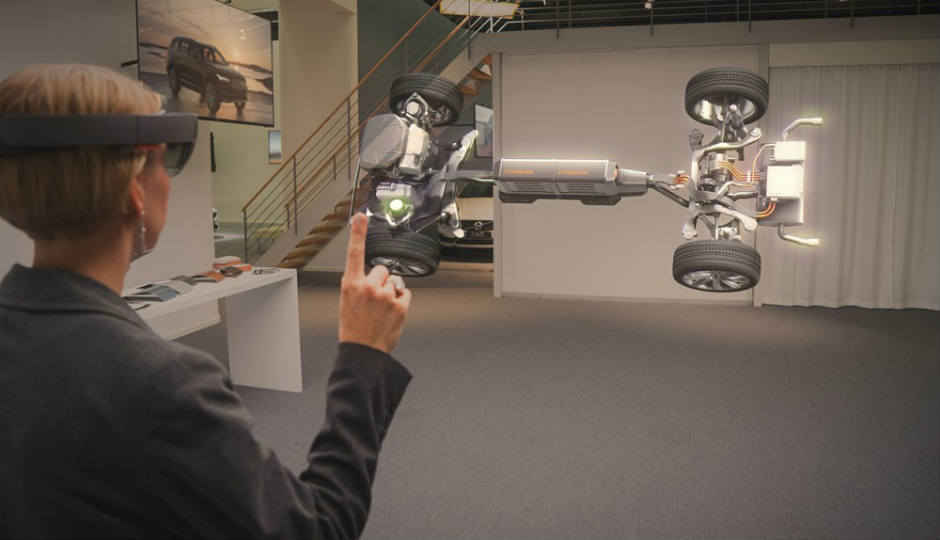Microsoft’s HoloLens now has an AI “coprocessor”, making it faster

Adding an AI chip allows Microsoft to skip uploads to the cloud, which also allows the device to function offline.
Ever since Microsoft first announced the HoloLens headset, the company has been bullish about its future. Microsoft made the Windows Holographic platform for developers to build for the HoloLens, and it also has the Holographic Processing Unit (HPU) that runs all the information onboard the HoloLens. Now, Microsoft is adding a custom designed AI chip to the device, which though designed by Microsoft isn’t manufactured by the Windows maker.
Microsoft calls the chip the “AI coprocessor”, and its addition allows the HoloLens to run offline. That’s because the headset can now process all the data from the HoloLens’ sensors without uploading to the cloud. Moreover, by taking over the AI processing responsibilities and offloading the upload time required for sending data to Microsoft’s cloud, the chip makes the HoloLens faster, even if only incrementally.
On the flipside, the AI chip draws power from the HoloLens’ battery, possibly reducing overall battery life. Given that Microsoft calls it a coprocessor, one could expect efficiency in terms of impact on battery life. That’s usually been the case with Apple’s M-series coprocessors and Qualcomm’s Hexagon DSPs.
Although Microsoft doesn’t explicitly say so, the AI chip should feature on a newer version of the HoloLens, the HoloLens 2 if you will. That’s because the coprocessor is going to be part of a new HPU. “Today, Harry Shum, executive vice president of our Artificial Intelligence and Research Group, announced in a keynote speech at CVPR 2017, that the second version of the HPU, currently under development, will incorporate an AI coprocessor to natively and flexibly implement DNNs,” Microsoft says in a blog post. The company even showcased a version of the new HPU, “running live code implementing hand segmentation”.




